Queen Elizabeth Np is the second largest park in Uganda after Murchison Falls NP. It is located in the western Rift Valley and covers an area of 1,978 square km. The park is located in a volcanic area where it is easy to see lakes that were previously volcano craters and with the views of the Rwenzori Mountains.
From 1920, it was declared Kazinga National Park, but after the visit of Queen Elizabeth II and Prince Phillip in 1952, the name of the park changed to what it currently has: Queen Elizabeth NP.
It conserves a great variety of wildlife and is one of the best locations to see herds of buffalo (if you haven’t been to Kidepo NP -you can read our experience in this park here-) and the Ugandan kob. About 95 species of mammals and 600 species of birds can be found. You cannot see rhinos, nor can you see zebras or giraffes.
The park is very large and has different sectors. You can access the sectors from different entrances. But what makes this park more famous, especially in the Ishasha area, are the tree climbing lions. Seeing these fantastic animals climb to the top of a tree and rest on a branch is a unique event in the whole world.
¿Why these tree climbing lions climb on the trees?
There are different theories about the why of all this. Local people say that it is part of the culture of the lions in this area and others say that they climb the branches to be cooler and thus avoid insects also from the ground.
In fact, this area is also known for the large number of tsetse flies that exist and that these also tend to bite the animals. One of the responses to the lion’s climb up the trees is thus to prevent the tsetse flies that are predominantly in the ground zone from biting them.
How to get there?
The Queen Elizabeth NP is one of the largest parks in Uganda, although its best known area is Ishasha where you can see tree climbing lions.
To get to Queen Elizabeth NP from the north, you will need to go to the town of Kasese, located between Lake George and the Rwenzori Mountains, and continue on the A109 until you reach the bridge that crosses the Kazinga Canal. From there, you can visit the Mweya sector by paying the corresponding park fees or cross the bridge and drive about 70 more kilometers along the road that goes to Kisenyi (you will pass by this fishing village) until you reach the entrance door to the Ishasha sector where you will have to pay the corresponding fees. It should be noted that you only pay the fees if you access these parts. If you are in traffic on these roads, you will not have to pay anything.
If you come from the Bwindi Impenetrable Forest, you will have to reach the town of Kihihi and from there you will easily reach Ishasha. To get to Kihihi, the route will depend on the sector of the Bwindi in which you are. If you are coming from the east, the best option is to drive to the Mbabara to Ishaka road and from there continue north until you reach the Kazinga canal.
Permits and prices
The Queen Elizabeth NP is a UWA managed park that has two main parts: the Ishasha sector and the Mweya sector (Kazinga canal).
For the Mweya sector, where the main attraction is to take a boat trip through the Kazinga Canal, you will not need to pay an entrance fee if you do not leave the main road. You will only have to pay for the boat excursion, which depending on the company you book with will cost you around 25-30 USD per person.
On the other hand, to enter Ishasha the entrance has a cost of 40 USD per person if you are an international visitor. In addition, you will have to add 50 USD per day and vehicle if you access any of the sectors with a vehicle with a foreign registration. You will pay this entrance at one of the two gates in the Ishasha sector, just off the main road.
We did not find any access gate or fence on the journey we made from Kasese down to Ishasha. Therefore, we suppose that if you do not deviate from this road, it will not be necessary to pay any concept in relation to the entrance of the Queen Elizabeth NP. But if you want to enter the Ishasha sector or enter Katunguru and Katwe, you will have to pay the corresponding entry fees.
What to do in Queen Elizabeth NP and in Ishasha sector?
The main activities that can be done to enjoy this area of the country are these:
– Take a boat cruise on the Kazinga Canal
One of the most beautiful activities to see animals in this area is to take a boat cruise through the Kazinga canal, without the need to pay for the park entrance. The boat cruises will allow you to enter the canal that connects Lake George with Lake Edward. This canal is 40 km long and is located on the Mweya Peninsula.
It lasts about 3-4 hours and a guide will give you information about the animals you see on the shore of the canal. It is done twice a day: from 11 am to 1 pm and from 2 pm to 5 pm. During the cruise there is the possibility of seeing crocodiles, buffalo, elephants, hippos, different antelopes … It is also a very important area for birds. The price is 30$ per person and you can book it through the Ugandan Wildlife Authority (UWA).
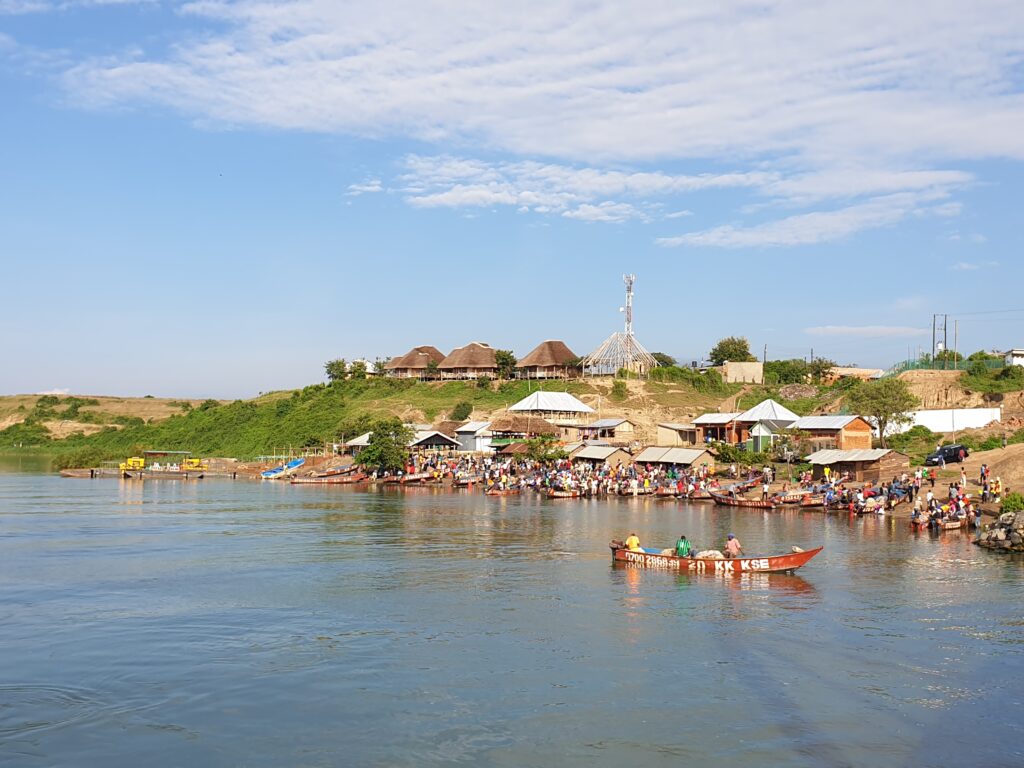
– See the tree climing lions in Ishasha sector
As we have said, tree climbing lions are one of the attractions to see in the Ishasha area. It is something unique in the world, that if you are lucky, you will be able to enjoy a good part of your safari through the park. And we were lucky enough to see them the two days that we entered, although it is not easy!!!
If you want to read our experience with these fantastic animals, you can read it in the section: our route.
– Go on a safari through the Ishasha sector to see other animals
In the Ishasha sector, you will not only find tree climbing lions. Being located next to a river that borders the Congo, you can also find hippos and other herbivores such as the Ugandan kob, buffalo or elephants. Don’t expect a large number of animals, but if you go in to see the lions, take the opportunity to see the other animals in the area as well.
Also, think that the animals are free and therefore, sometimes as much as the tree climbing lions are the most famous of Ishasha, you may not see them. We were very lucky to find them!
– Visit the northern part of the park: Katunguru and Katwe.
From Katunguru and Katwe you can visit the northern part of the park. Around these two towns you will also find many accommodation offers. From here, you can visit the sectors of Kasenyi, the North Kazinga Plains and the sector of the Mweya peninsula which is the most famous for having many more animals. To access these sectors you must enter and leave each one of them by the main road that is public.
Where to sleep?
– Bullbush River Camp: This was our accommodation when we visited the Ishasha sector. Located just outside the park entrance, it has a swimming pool, restaurant, cabins and a very nice camping area around the river with great value for money. A great option if you decide to finally visit Ishasha. To book you can click here or contact Jim, the manager, at +256772196135 or at +256759063075.
– Ishasha Campsite: This campsite is located within the park, right next to the river that separates Uganda from the Congo. There are two and they must be reserved at the entrance to the Ishasha sector. They are next to the river full of hippos and with a very beautiful surroundings in the park. The prices are 20,000 UGX per person.

– Enjojo Lodge: Located on the outskirts of the Ishasha sector, this accommodation offers excursions in the park and a restaurant with excellent views towards a waterhole where many animals of the park come close. It has camping and different types of rooms with prices ranging between 45 and 120 USD depending on the type of accommodation you choose. To book you can click here.
Our route
DAY 1: We leave early from the Bella Vista Lodge, in the Kasenda Lakes area, to drive towards Ishasha. We had been told that there was a bridge that crossed the Kazinga Canal that was cut off and could only be crossed by a ferry for which you had to wait about 3-4 hours. The other option was to take a considerable round of about 6 hours to reach the destination. So we decided to leave early and see what the canal situation was.
Along the way, we followed the silhouette of the Rwenzori Mountains until we reached the Kazinga Canal, where the Queen Elizabeth NP begins, and to our surprise, the bridge was still under construction about to be reworked but they allowed low tonnage vehicles to pass. So we were able to cross the canal and save a few hours of waiting! We were already on the Queen Elizabeth but we still had to get to Ishasha. Along the way, we would cross different rivers and observe some buffalo until we reached Ishasha and started looking for accommodation. We finally opted for the Bullbush River Camp, which had a very nice riverside camping area.
In the afternoon, we went into the park in search of animals. At the door they informed us of different places where tree climbing lions are usually placed, which are unique because only here and in a park in Tanzania do they climb the branches to escape the tsetse flies. We observed different groups of herbivores and some elephants and we went to the river where we had the DRC Congo just 5 meters across the water. But the border crossing was guarded by a good group of hippos resting in the water. However, the lions were hard to find. Finally, in a tree we find them: two lionesses resting on a branch. We were there observing these very special animals, and suddenly, a car with a Terres Llunyanes logo passed in front of us. We, Catalans, are everywhere!
After observing the lions, it was time to leave the park and go to our campsite to rest. Tomorrow we would try to find more!
DAY 2: We got up early in search of tree climbing lions, and we only found those of the previous day that seemed to have been immobile all night. However, seeing the kings of the Jungle perched on a branch is a spectacle that never ceased to amaze us. Anyway, Ishasha is lucky to keep these animals because it is their main attraction. We toured the entire park, and the fauna there was not very numerous: some elephants, herbivores and hippos in the river.
We left the park around mid-morning and drove to Lake Bunyonyi, passing through a mountain route only suitable for 4x4s. The road was a route in the middle of valleys and mountains with beautiful views, forests, rural villages and slopes that left our hearts in a fist. We followed the Google Maps that took us through some complicated routes, until we reached the asphalt and we were only about 60 kilometers from the city of Kabale, the gateway to Lake Bunyonyi. If you want to read our experience in this lake, you can click here.


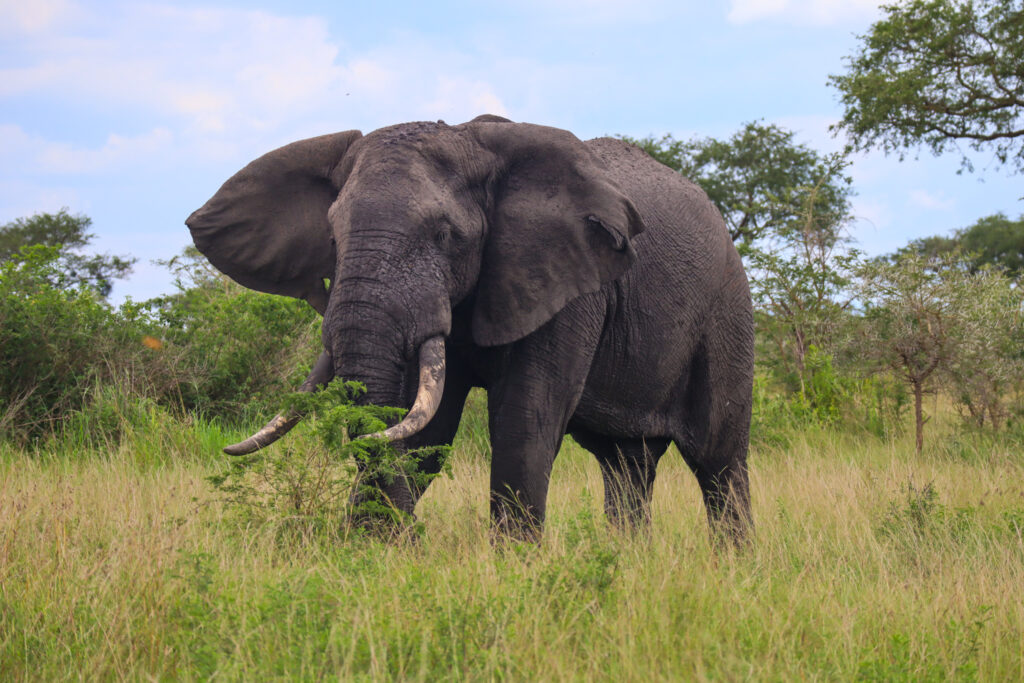
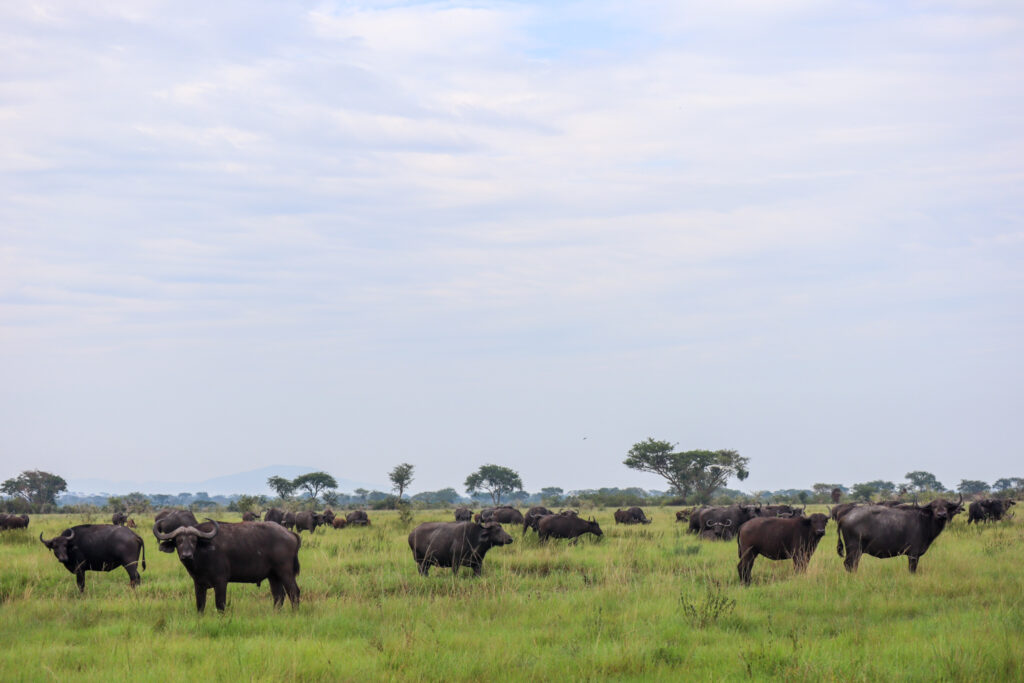
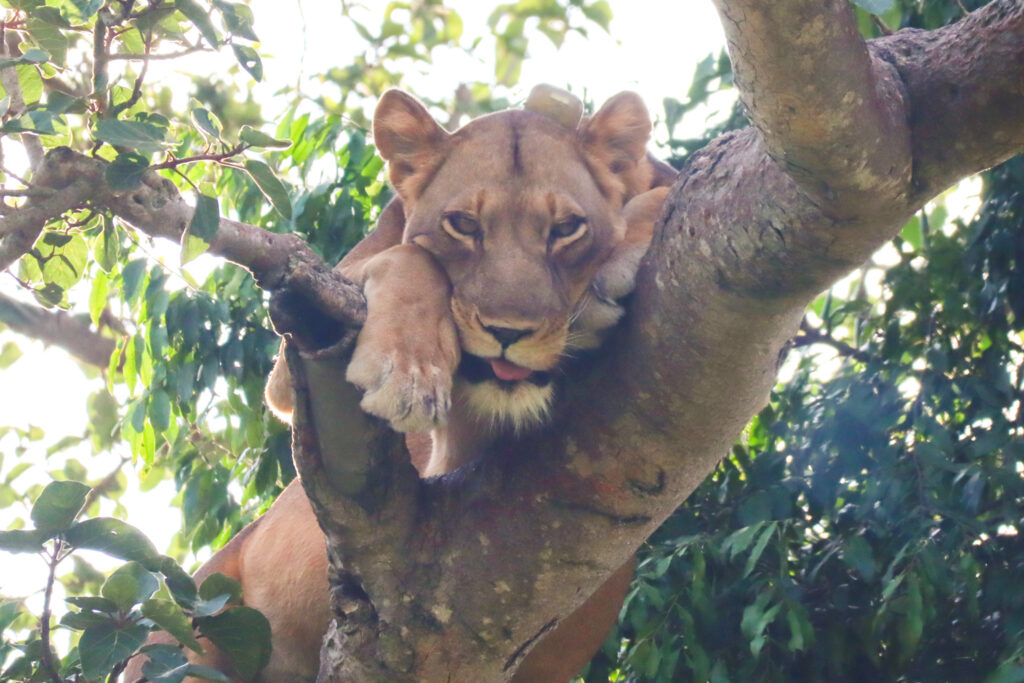



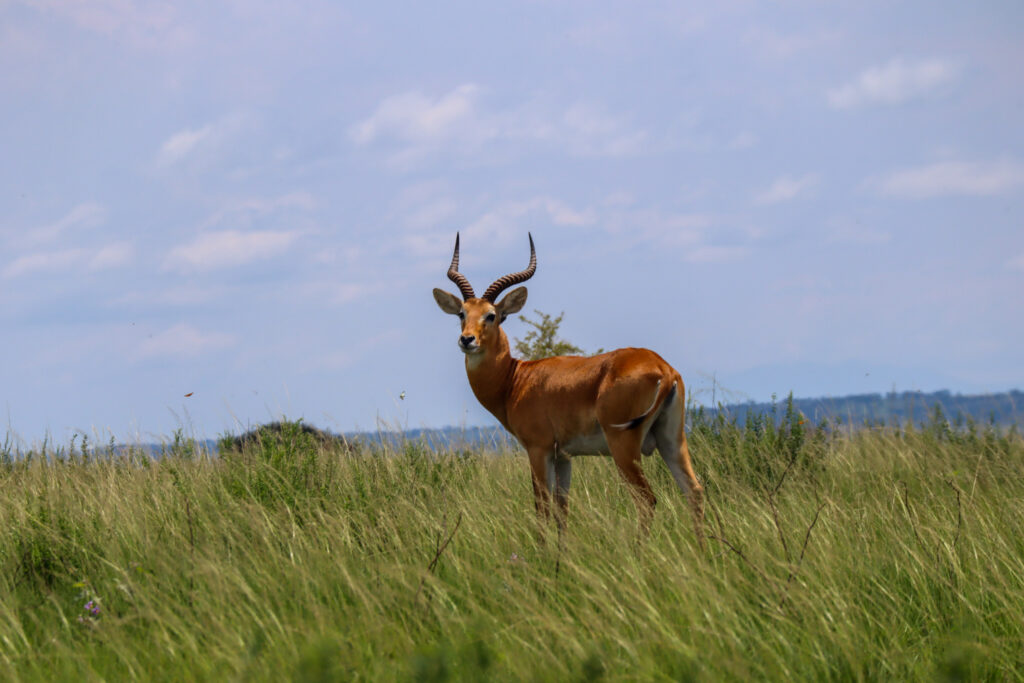
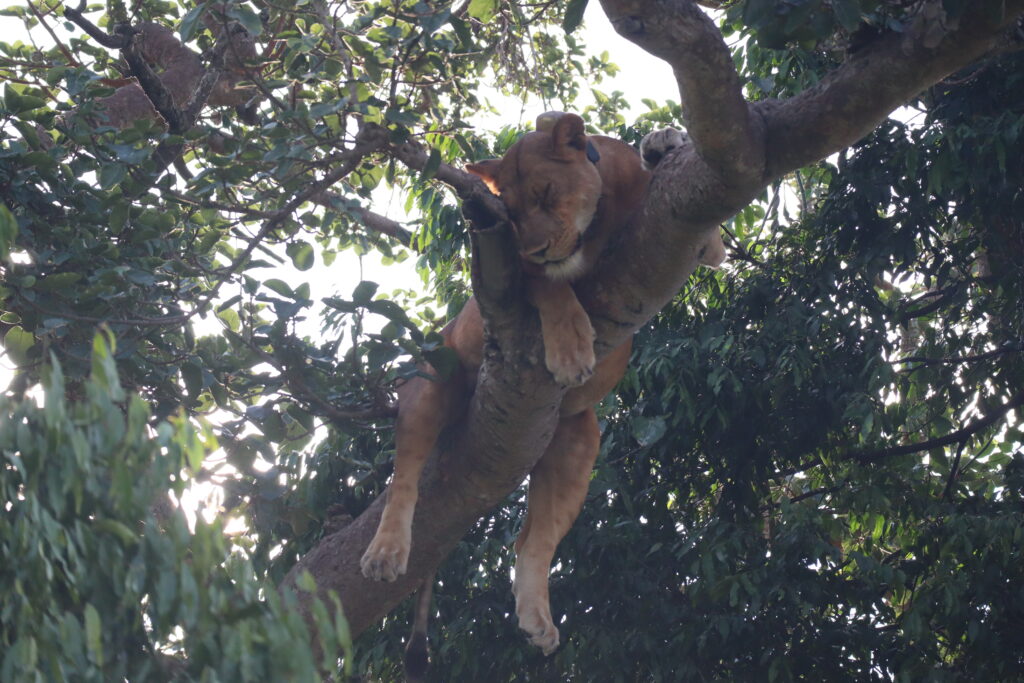
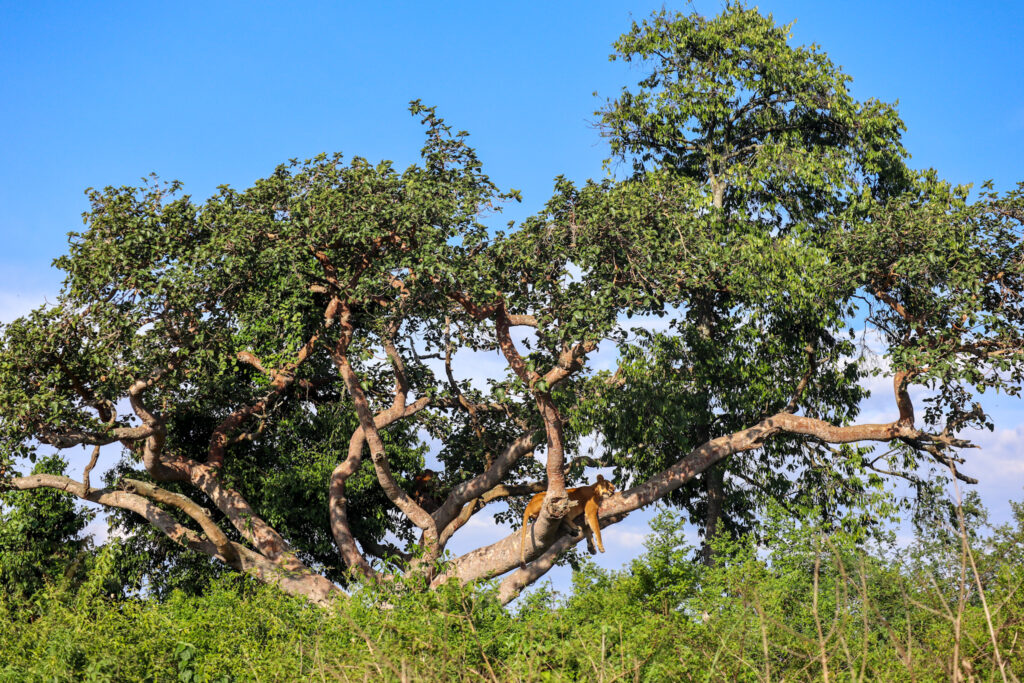
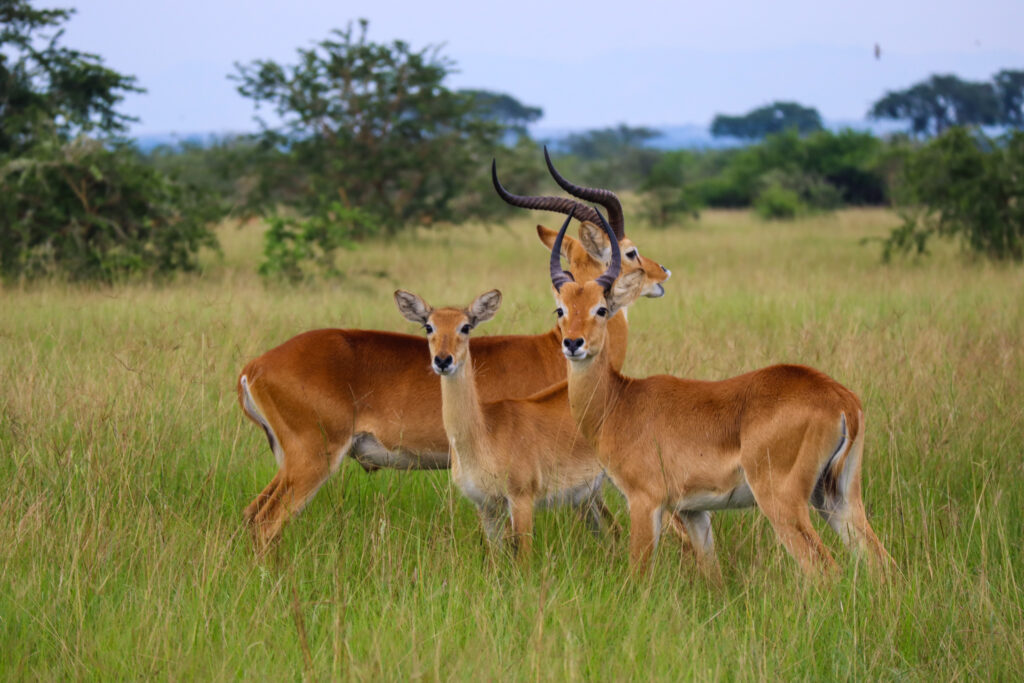

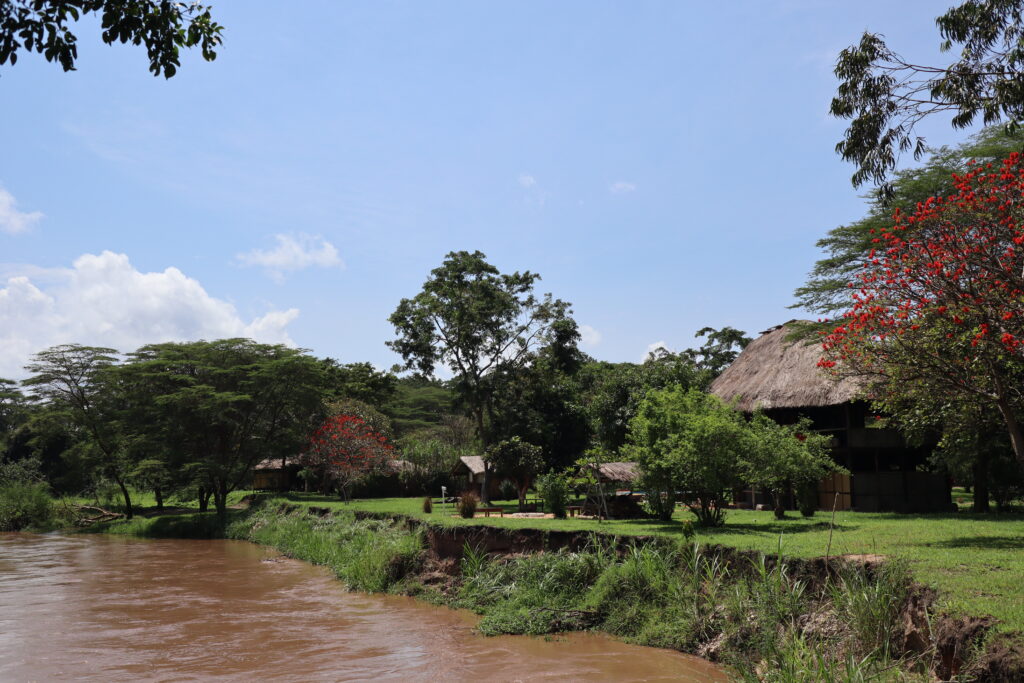
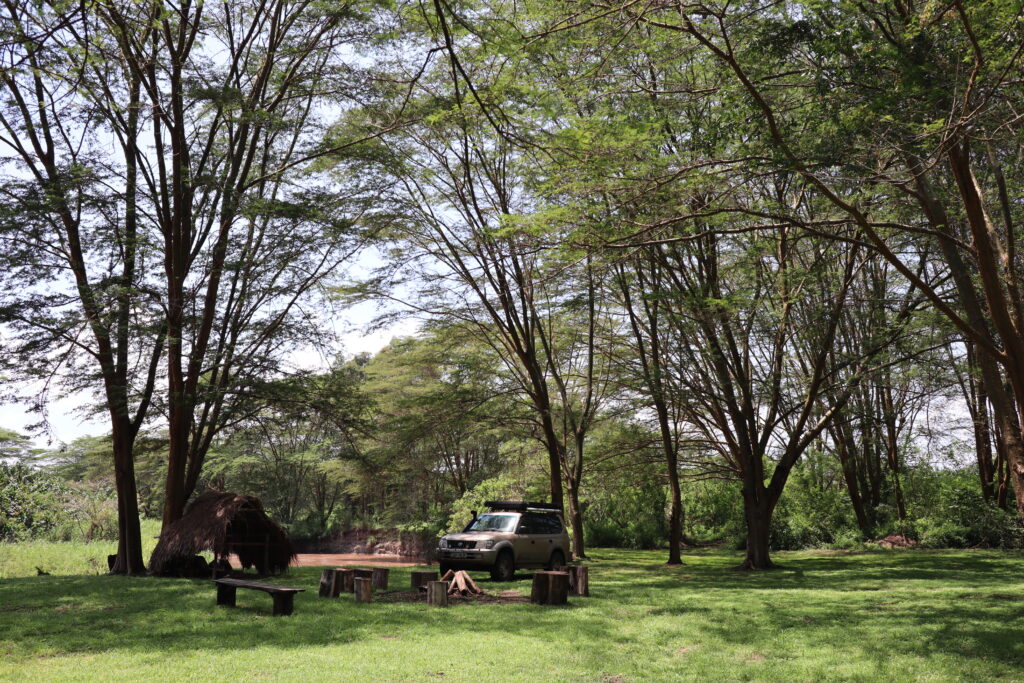

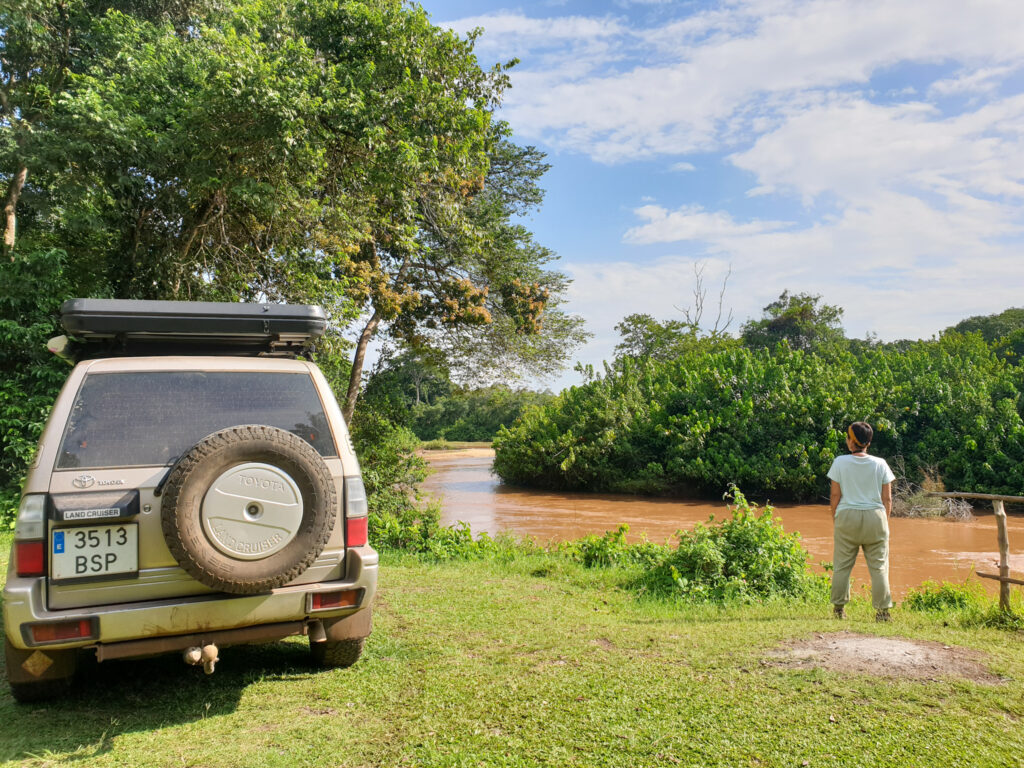
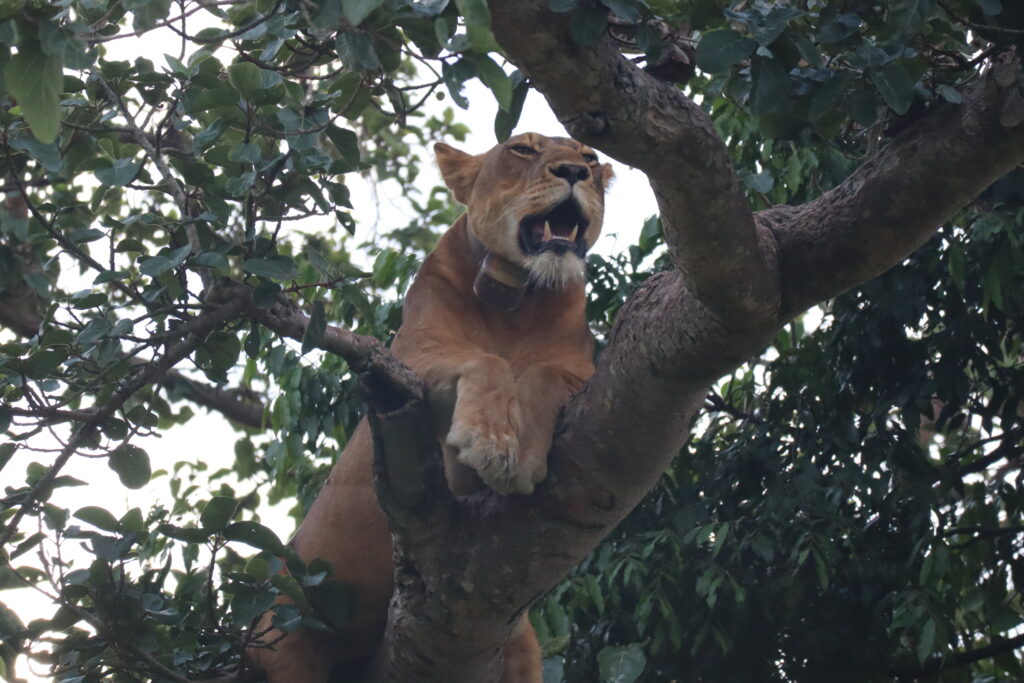
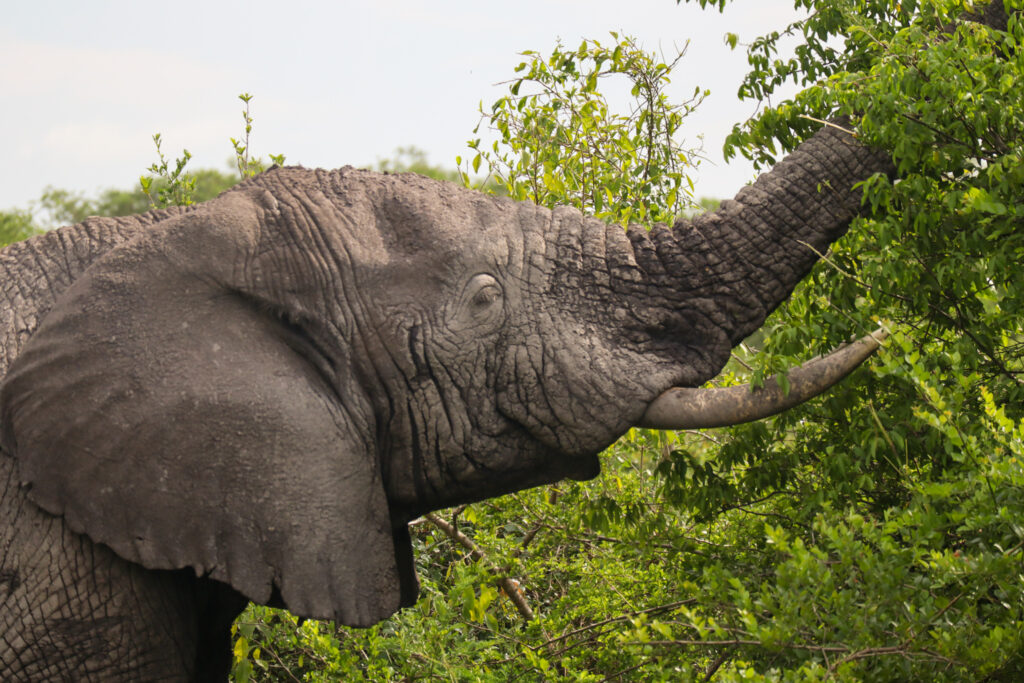

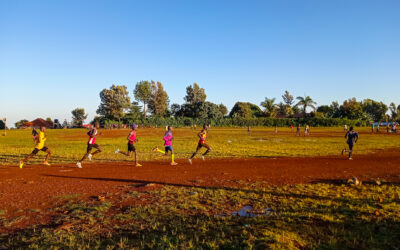

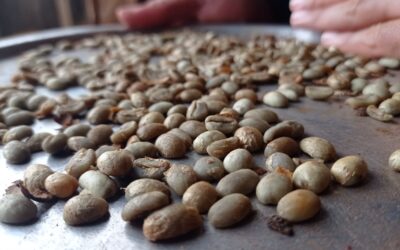
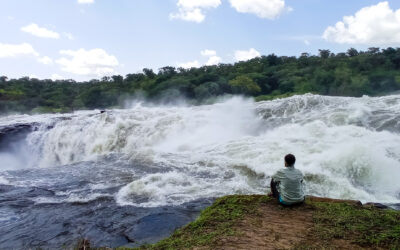
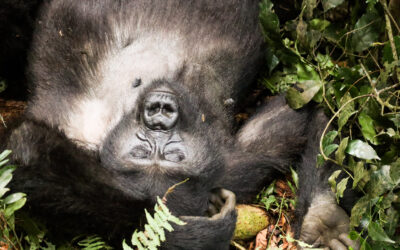
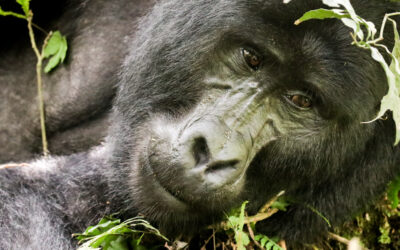
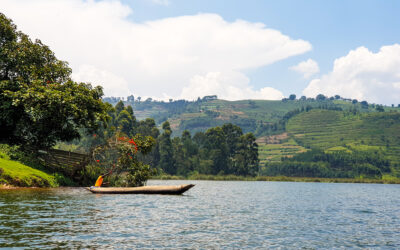


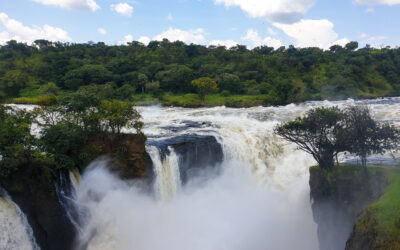
0 Comments